This stunning celestial phenomenon, which was visible to the naked eye for an incredible year and a half, is an unforgettable sight for those fortunate enough to witness it in April 1997. During this time, Comet Hale-Bopp came closest to Earth, leaving a lasting impression on all who beheld it.
What makes it so “tragic,” you may wonder? Where did Comet Hale-Bopp come from, and what is its orbital period? Most importantly, when will this awe-inspiring celestial wonder grace our skies once again, giving us the opportunity to capture its beauty through our lenses in Russia?
Discovery of the comet
This celestial wanderer, known as the “tail wanderer,” was first observed on July 23, 1995 by American astronomers Hale and Bopp in the starry sky.
The comet reached its closest point to Earth on March 22, 1997, when it was only two hundred and twenty square kilometers away. By April 1, it had come within one hundred fifty-five million kilometers of the Sun.
The brightness of this celestial visitor is difficult to determine accurately, leading to disagreement on its brilliance. However, NASA notes that comet Hale-Bopp’s brightness surpassed that of even Halley’s Comet, earning it the title of the brightest comet of the twentieth century.
A chronicle of eighteen months
For a span of eighteen months, the comet Hale-Bopp graced the sky with its stunning presence, visible to the naked eye. It bid farewell to the heavens in May 1997, surpassing the endurance of any planet. Witnesses marveled at the comet’s awe-inspiring body and its radiant tail, which remained clearly visible even amidst the brilliantly illuminated skyline of New York City.
Notably, this celestial phenomenon shattered the previous record set in 1812 by its celestial counterpart, the Great Comet, which could only be observed for a mere nine months. Leo Tolstoy immortalized this event in his renowned novel, “War and Peace.”
What is the Hale-Bopp Comet’s Tragedy?
Regrettably, the Hale-Bopp comet had a less-than-favorable reputation, causing quite a commotion! However, it also instilled fear in some individuals rather than admiration. Numerous people were convinced that this comet was guiding extraterrestrial spacecraft.
These rumors sparked the tragic event of mass suicide, involving forty devoted followers of the religious sect known as “Gates of Heaven,” which was active in California. These individuals believed that aliens would transport the souls of suicides to a superior and improved world. Upon learning about the comet’s alleged connection to aliens, people willingly ended their lives. Additionally, the men underwent castration in order to prepare for a genderless existence.
One of the suicides, Thomas Nichols, wrote in his suicide note that he was willingly bidding farewell to his life in order to follow the extraterrestrial beings from the Hale-Bopp comet.
Circulation Period
Prior to entering the planetary system, Comet Hale-Bopp had an orbital period of 4,206 years. After departing the planetary system, it will have a period of 2,380 years.
Due to its proximity to Jupiter, the comet’s orbits have undergone significant changes.
However, contemporary individuals should not anticipate the return of the Hale-Bopp comet – scientists only predict its next appearance in 4390.
Nevertheless, let’s not delve into scientific measurements and magnitudes, but rather examine a photograph from 1997 to observe the appearance and visibility of this celestial beauty in the Russian sky:
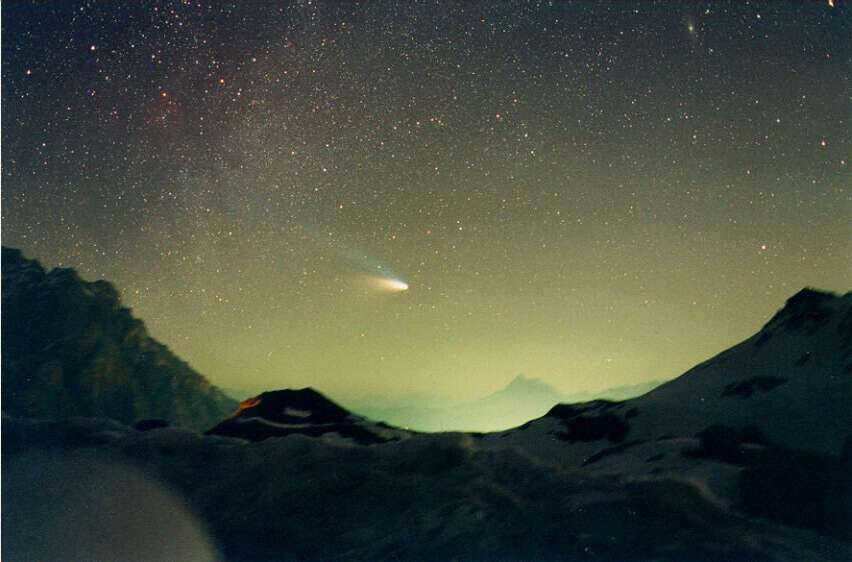
Heila Boppa is one of the comets that make a celestial appearance above our planet approximately once every 2500 years. Its discovery occurred at a time when it was already in close proximity to Earth.
On July 23, 1995, a remarkable event occurred when American astronomers Alan Hale and Thomas Bopp simultaneously observed an astronomical object in close proximity, exhibiting relative motion to the surrounding stars.
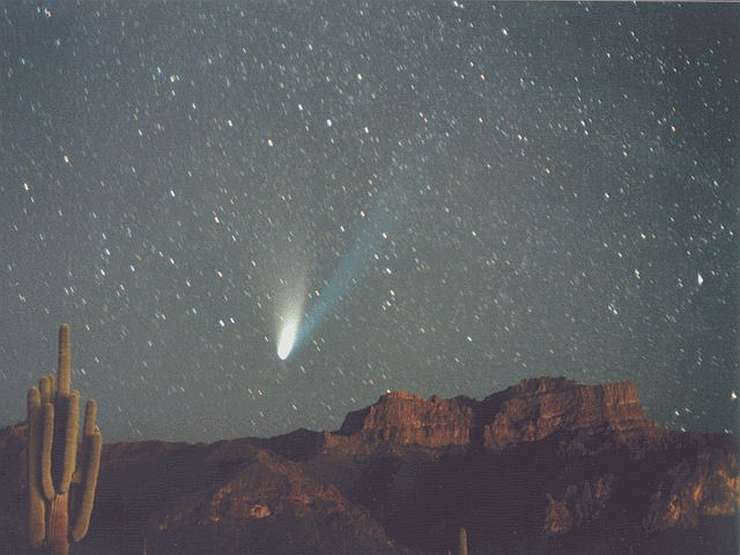
Heila-Boppa sighted above the Superstition Mountains
A group of scientists made the decision to inform the American Central Bureau of Astronomy. It is this organization that determines whether a fresh cosmic entity has been identified. The notification was promptly dispatched, and on July 24, the entire world was informed about the detection of an unfamiliar comet. It was given the name of its discoverers, Alan Hale and Thomas Bopp.
The comet they discovered emerged in the Earth’s atmosphere during the spring of 1996, precisely in May. It remained visible to the naked eye until the winter of 1997, disappearing from the Earth’s sky in December. Hale Boppa is and continues to be the most brilliant comet ever observed by scientists. Utilizing intricate calculations, they deduced that it will not be visible again until the year 4390.
Is it an extraterrestrial device? Or extraordinary abilities?
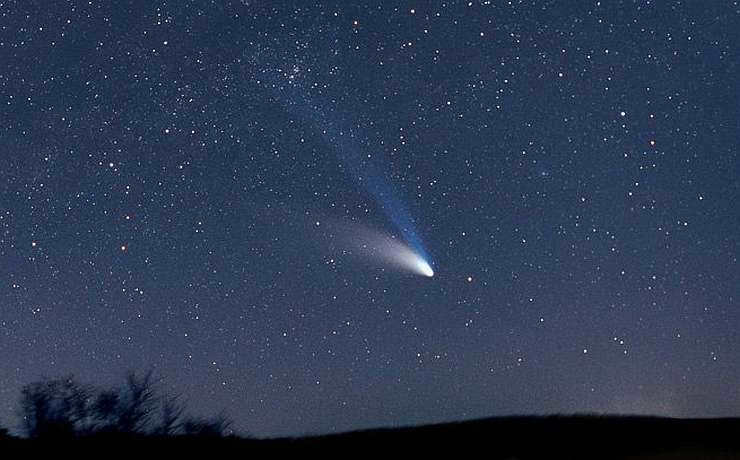
The study of Hale Bopp’s comet by various scientists over a span of eighteen months led to numerous findings, sparking intense debates and generating various theories. One of the notable discoveries was the presence of a third type of tail, distinct in its composition. Typically, comets exhibit gas and dust tails, but in this particular case, a sodium tail was also observed, thanks to advanced technological instruments employed by the scientific community. The formation of a tail composed of neutral atoms remained an enigma, leaving scientists puzzled.
Unique properties of the nucleus of this comet were also discovered, as it would change not only its axis of rotation and period, but even its direction of rotation while spinning. As a result, scientists made the hypothesis that it could have two nuclei, but they were unable to prove or disprove this theory. Another hypothesis emerged, with some researchers suggesting that there might be an extraterrestrial device inside the comet, although no one was able to provide evidence for this.
A sign of personal growth
Without a doubt, the comet will be remembered as the most extraordinary celestial object that humanity had the opportunity to witness in the 20th century. It also ignited a wave of fascination with the mystical and apocalyptic. Various legends, myths, and peculiar tales were told about the comet. However, the impact of the comet went beyond mere stories.

The less knowledge one has, the more superstition they tend to believe. It is not surprising that previous generations viewed comets, also known as “tailed stars,” with great apprehension. However, how can we justify the fears of people in the 20th century? In this article, we will explore the fascinating case of the arrival of the Hale-Bopp comet.
A brilliant visitor from the sky
In the year 1995, the appearance of comet Hale-Bopp caught the attention of astronomers. It was observed to be located at a distance of 7.2 astronomical units (a.u.) away from our sun. Experts predicted that its approach towards our planet would be a spectacular event, and therefore it was nicknamed the “Great Comet” which arrived in the year 1997.
It is true that contemporary individuals should have a more rational perspective towards celestial phenomena. Nevertheless, the arrival of the comet caused a widespread sense of panic among countless people on Earth. Although scientists proposed numerous unconventional theories, they ultimately did not perceive any imminent danger.
Their attention was primarily drawn to the peculiar tail (made of sodium), the significant quantity of deuterium (in the form of deuterium oxide), the existence of argon (a previously unseen element in comets), and the potential existence of a dual nucleus. However, there were several peculiar conjectures.
Who arrived alongside the comet?
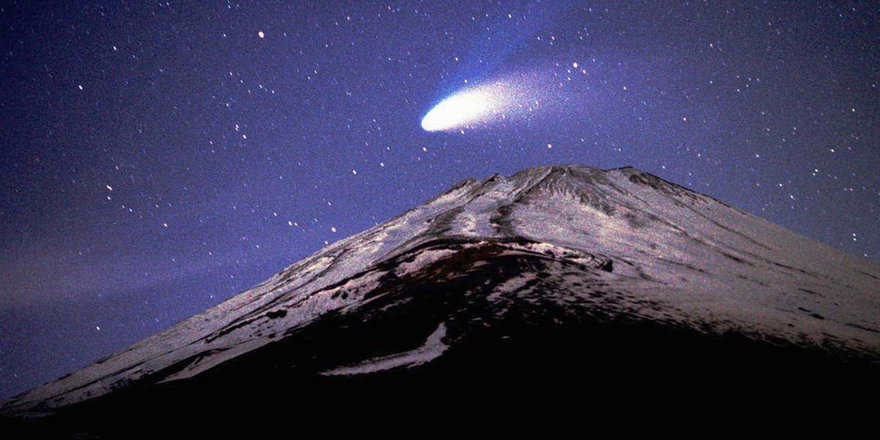

There was a widespread belief that the comet was being followed by an alien spaceship
The comet was a hot topic of conversation, with numerous dedicated websites popping up daily to showcase new photographs. However, one image, taken by Chuck Schramer in November 1996, stood out. It captured a strange elongated object seemingly flying near the comet.
The comet arrived in 1997, surpassing even Sirius in its radiant brilliance. It has since departed, but will remain visible until 2020. The next generation, in the year 4390, will be the only ones able to witness its return. Although no extraterrestrial spacecraft has ever visited us, the concept has captivated the imagination of certain individuals.
A devastating incident.

Marshall Applewhite, leader of the religious group known as Heaven’s Gate, tragically led his followers to their demise. The cult believed in the existence of extraterrestrial beings who had previously made contact with humanity and shared their knowledge. The most spiritually advanced members of the group believed they could transcend earthly existence and join these higher beings. The history of the Heaven’s Gate cult is filled with eerie and unsettling events, but it all reached a climax with the arrival of a comet.
He succeeded in causing the death of 38 individuals. They all departed one by one, leaving behind bags of belongings and a small sum of money nearby (most of which were poisoned).
Addendum
There is speculation that Epplewhite resorted to such actions due to suspicions of having cancer. However, the forensic examination revealed that he was in perfect health. It is important to note that specialized teams of scientists consistently monitor objects in close proximity to Earth. Therefore, it is unjustified to succumb to prejudice. Have you had the opportunity to observe a comet?
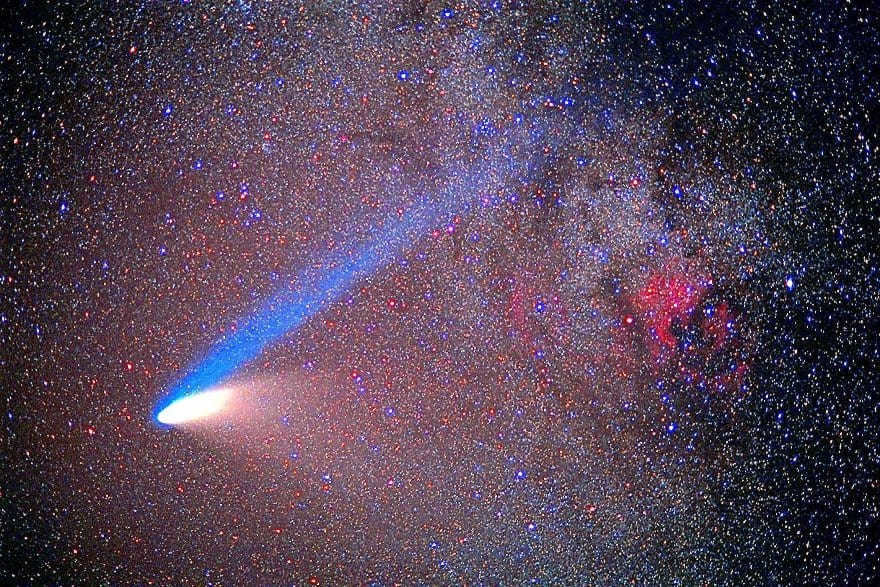
C/1995 O1 (Hale-Boppa). – A comet that orbits the Sun with a long period: detailed description, characteristics accompanied by photos, widely known comet, close encounter with Earth, discovery, and naming.
As it made its way towards Earth in the late 1990s, Comet Hale-Boppa captured the attention of many. Its closest approach occurred in 1997, and it remained visible from the Northern Hemisphere for a remarkable 18 months, even without the need for telescopic equipment.
Comet Hale-Boppa is considered to be one of the most popular comets in terms of media coverage and public interest. It shines 1000 times brighter than Halley’s Comet, and its distinctive double blue-white tail could be seen even in illuminated skies.
Regrettably, the arrival of the blob was marked by unfavorable occurrences. Around 40 individuals from Heaven’s Gate (San Diego) tragically took part in a collective suicide.
The celestial entity from M70 and the Hale-Bopp comet
Comet Hale-Bopp was independently detected by Alan Hale and Thomas Bopp. At that time, it was the farthest comet discovered by amateur astronomers. On July 23, 1995, both astronomers directed their telescopes towards the globular cluster M70. Hale expressed astonishment upon witnessing an unfamiliar object that had not been present in the cluster a week prior.
The data was transmitted by the men to the Central Bureau of Astronomical Unions. It was astonishing to observe the remarkable brightness of comet C/1995 O1 even from such a considerable distance. The observers were aware that as the comet approached closer, it would create a mesmerizing display of light. However, forecasting the behavior of the comet is challenging due to its composition of ice and rock, which makes its trajectory susceptible to the influence of other celestial bodies and events. Take a look at the photo showcasing the Hale-Bopp comet.
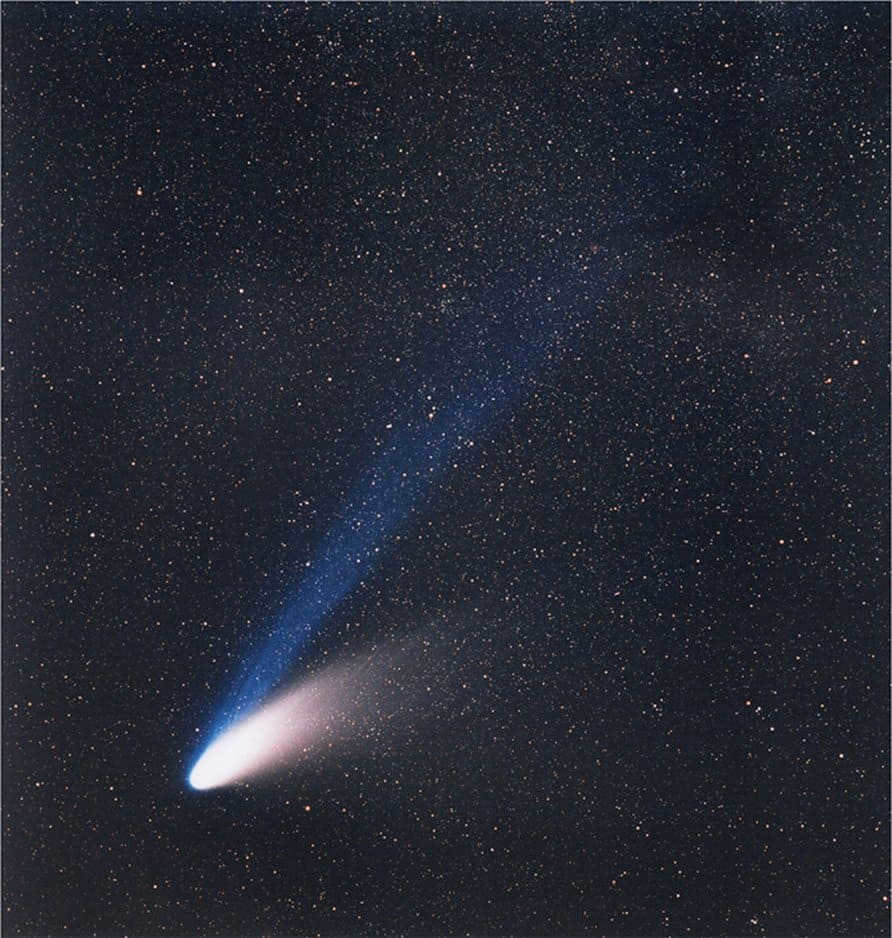

In 1997, Comet C/1995 O1 illuminated the night sky. Comets that have long periods, such as this one, are seen as a major peril to our planet.
The comet approached within a maximum distance of 193 million kilometers. During that time, the comet Hiyakutake was also visible in the sky, but it was dimmer despite being closer.
The Hale-Bopp comet received extensive coverage in the media, and its impact was also felt online as the Internet was gaining popularity. The influx of visitors to the comet’s website was so overwhelming that it caused the first-ever “traffic jam” on the site. With a staggering 1.2 million visitors per day, the comet’s home page set a new record for web traffic.
Scientists closely monitored the comet using advanced equipment, including the Hubble Space Telescope. Through these observations, they discovered that the nucleus of the comet spans 30-40 kilometers in diameter. Additionally, they observed a significant increase in the amount of dust emanating from the comet, which was eight times greater than the average. The surface of the comet appeared incredibly dynamic and ever-changing.
The celestial gateway and the appearance of Comet Hale-Bopp.
Marshall Applewhite, a former music professor, led a cult known as Heaven’s Gate. The group advocated for sexual abstinence and castration, as they believed that their physical bodies were disposable vessels. They held the belief that an extraterrestrial spacecraft would arrive in conjunction with the comet.
In the last days of March in 1997, Marshall Applewhite and 38 of his followers consumed a lethal concoction of poison mixed with vodka and peacefully laid down to pass away. Their bodies were discovered in a luxurious residence located in suburban San Diego, California.
The upcoming arrival of the Hale-Bopp comet
The arrival of the Hale-Bopp Comet put on a spectacular show. However, upon analysis, it was discovered that it had previously come close to Earth 4200 years ago, meaning it won’t return for millennia. As a result, researchers have made an effort to gather as much information as possible from this visit.
The initial images of Comet Hale-Bopp were captured in 2002 by the European Space Agency (ESA) when the comet was 2 billion kilometers away. Despite its frigid temperatures, it is still enveloped by a large, active nucleus made of dust and ice, measuring 50 kilometers in diameter.
Physical attributes of the Hale-Bopp comet (C/1995 O1)
| A. Hale, T. Bopp |
| July 23, 1995 |
| 1997 Large Comet |
| 0.995064 |
| 185 a.e. |
| 0.914140 a.e. |
| 369 a.e. |
| 2534 years |
| 89.4301° |
| April 1, 1997 |
| ~ 4390 |
There are numerous comets visible in the sky at any moment, with different levels of brightness. Many of them can only be observed using powerful telescopes. Nevertheless, there exists a group of comets known as large or great comets. In this article, we will discuss the unique characteristics of these comets and provide information on which ones are expected to reappear in the future.
Read Hitech in
What type of comets are considered as great comets?
Great comets are comets that achieve exceptional brightness and are easily visible to observers on Earth. Typically, a large comet appears approximately once every ten years. However, it is challenging to predict whether a comet will become “big” due to various factors that can significantly impact its brightness. What are these factors?
The first factor that determines whether a comet is classified as a large comet is its orbit. The comet must pass close to either the Sun or Earth.
Secondly, a big comet must have a substantial nucleus. The larger the nucleus, the more prominent the comet becomes.
Thirdly, visibility plays a crucial role. Comets that come into close proximity with Earth have the potential to shine brightly, but they are only visible for a few days. On the other hand, a comet that is further away from Earth will remain in the sky for a more extended period, allowing for continuous observation.
And lastly, fifthly. To earn the title of a substantial comet, it must possess a dusty tail. A significant amount of dust is a requirement for a noticeable and important tail and is a crucial characteristic of sizable comets.
Great Comet C/1811 F1 (Great Comet)
The comet was initially spotted on March 25, 1811 by Honoré Flaugerg at a distance of 2.7 a.u. from the Sun. Many people in Marseilles were able to witness the comet with their naked eye. In April, the comet’s discovery was officially verified.
The observation lasted until the middle of June, when the comet vanished in the Sun’s rays. It only became visible from Earth again in August. On September 12, it reached its closest distance to the Sun, measuring 1.04 astronomical units. The comet’s nucleus was estimated to be 689 km in size by William Herschel, the observer. Its minimum distance from Earth occurred on October 16, 1811, at 1.22 astronomical units. Four days later, it reached its peak brightness, shining as brightly as the most prominent stars in the night sky. In December 1811, the comet’s tail curved away from its core at a 70-degree angle. It was a truly impressive sight, even though it didn’t come close to either the Earth or the Sun. In Cuba, the naked eye could see the comet until January 9, 1812, which was a total of more than 9 months. Before the famous Hale-Bopp comet appeared, this was a record-breaking event.
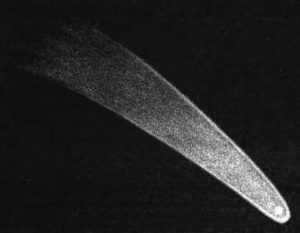
The most recent sighting of this comet was on August 17, 1812. On that day, V. K. Vishnevsky in Novocherkassk was able to detect the comet as a faint spot of magnitude 12 using a telescope.
When is the next appearance expected?
The comet’s orbital period around the Sun is approximately 3,100 years. Therefore, the comet is projected to return at the end of the fifth millennium.
Comet Donati (C/1858 L1, 1858 VI)
Comet Donati was detected by Italian astronomer Giovanni Donati on June 2, 1858. It was an extraordinary comet and considered one of the most stunning comets of the 19th century, following the impressive Great Comet of 1811. Prior to Comet Donati, the last significant comet sighting occurred in 1854. Furthermore, Comet Donati holds the distinction of being the first comet ever captured on film.

According to astronomers of the 19th century, Comet Donati was hailed as the most exquisite comet ever seen. It served as a muse for numerous works of art and holds the distinction of being the inaugural comet to be captured on film.

On September 30, the comet reached its perihelion, the point of its maximum approach to the Sun. At that time, its tail measured 40° in length and 10° in width. On October 10, 1858, it came closest to Earth.
Legend has it that even Abraham Lincoln gazed out of his window to catch a glimpse of this remarkable celestial event. The comet had a long, arched tail spanning approximately 50°.
When can we expect its return?
It is predicted that Comet C/1858 L1 will make its reappearance in the 39th century, around 3811.
The Great Comet of 1882 (C/1882 R1)
The Great Comet that appeared in September 1882 is considered to be one of the most brilliant comets of the 19th century and one of the most remarkable in the past thousand years, earning it the nickname “Big Comet”. This celestial phenomenon was independently discovered by multiple observers. During its initial appearance in early September of that same year, it was easily visible in the early morning hours even without the aid of specialized equipment. The comet was rapidly increasing in brightness as it approached the Sun.
On September 17, the comet reached its perihelion, coming within a mere 480 thousand km from the Sun’s surface and achieving a stellar magnitude of -17.0, making it visible even during daylight. By September 30, the coma region of the comet began to elongate, and two fragments became noticeable. As of October 17, the number of fragments had increased to five.
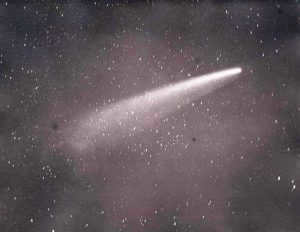
Despite the fact that the nucleus of the comet disintegrated severely during perihelion, it remained visible until June 1, 1883. Subsequent disintegration of the nucleus after perihelion resulted in the production of a large amount of dust, making the tail even more visible.
The Great Comet of September became well-known as a member of the Kreutz family of comets, which is a group of fragments that formed after the breakup of a large comet several hundred years ago.
When will it come back?
The comet has an orbital period of approximately 800 years.
The remarkable comet of January, 1910, or The Day Comet (C/1910 A1)
The extraordinary January Comet of 1910, also known as the Daylight comet, officially named C/1910 A1, was a luminous comet that made its appearance in January 1910. It outshined Venus in brightness.
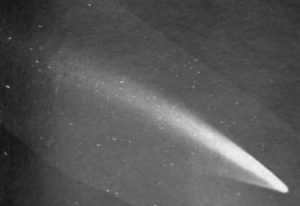
The comet attained perihelion on January 17 and could be observed during daylight hours with a brightness of -5.0.
Following perihelion, its brightness decreased significantly as it moved into the skies of the Northern Hemisphere. However, a spectacular trail of dust compensated for the fading, and by early February, it had extended to 50°. Normally, this comet would not have been considered large: its overall brightness was insufficient, and its distance from Earth was not particularly close.
Nevertheless, its close passage by the Sun and its dust-laden composition altered the circumstances.
When will it come back?
Due to its lengthy orbital period, this comet will make its return in approximately 57,000 years.
Comet Ikeya-Seki, also known as C/1965 S1 (Ikeya – Seki), was discovered by two Japanese astronomers named Kaoru Ikeya and Tsutomu Seki. The comet was first spotted on September 18, 1965, appearing as a dim object when observed through a telescope. Initial calculations of its trajectory indicated that on October 21, it would come within a distance of approximately 450,000 km from the Sun’s surface and had the potential to become exceptionally luminous.
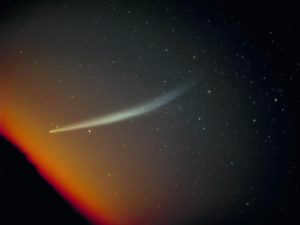
The comet lived up to expectations: as it approached perihelion, witnesses reported that it could be seen clearly in the daytime sky near the Sun. In Japan, the comet reached perihelion at noon local time and was 60 times brighter than the full moon. This particular comet, known as Comet Ikei-Seki, proved to be one of the most brilliant comets of the past thousand years, earning it the nickname the Great Comet of 1965.
Shortly before reaching perihelion, the comet broke into three parts. These three fragments continued on very similar orbits, and the comet became visible once again in the morning sky in late October, boasting a very bright tail. By early 1966, the comet could no longer be observed as it headed towards the outer reaches of the solar system.
Comet Ikei-Seki belongs to the Kreutz family of comets that have close approaches to the Sun.
When will it come back?
The exact timing of its next perihelion is unknown; currently, it is moving towards the outer region of the solar system. It is estimated that fragment periods may reoccur in 800-1000 years.
Comet Bennett (C/1969 Y1)
Comet C/1969 Y1 (Bennett’s Comet) – one of the two prominent comets that were visible to the naked eye in the 1970s (the other being comet Vesta). Its remarkable brightness made it one of the notable comets. It was also the second comet in the history of astronomy to be observed from artificial satellites.
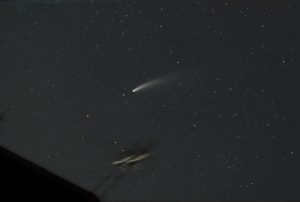
The comet and Earth were conveniently located in close proximity to each other, allowing for continuous observation from its discovery in the southern sky until mid-September 1970 near the north pole of the sky. Over a period of about 10 months and through 391 observations, Marsden was able to determine an elliptical orbit for the comet. This orbit is inclined to the ecliptic by approximately 90°, making it perpendicular to the orbits of the planets. At its closest point to the Sun (perihelion) on March 20, 1970, the comet was slightly farther from the Sun than Mercury, the innermost planet, at a distance of approximately 80.4 million km. On March 26, it came within a close proximity of 0.69 astronomical units or 103.0 million km to Earth.
When is the next expected return of the comet?
The next occurrence of perihelion is anticipated to happen in the year 3600.
Comet Hyakutake (C/1996 B2).
Back in 1996, Comet Hyakutake (C/1996 B2 (Hyakutake)) had a close encounter with our planet.
Comet C/1996 B2 (Hyakutake), which is also famously referred to as the Great Comet of 1996, was first spotted on January 30, 1996 by Yuji Hyakutake, an amateur astronomer from Japan. On March 25, 1996, the comet passed by Earth at a distance of 0.1 astronomical units (a. e.).
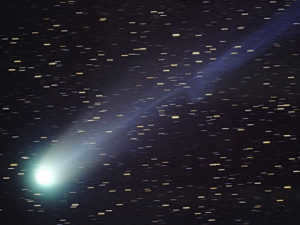
Comet Hyakutake is categorized as a long-period comet, which means that it has had very few encounters with the Sun and has managed to maintain its nucleus in its original condition. Once it reached its closest point to the Sun, known as perihelion, in 1996, the comet’s orbit experienced significant disruptions due to the gravitational influences of the planets in our solar system.
When can we expect its next appearance?
According to the HORIZONS ephemeris generator, it will take more than 108,000 years for comet Hyakutake to return and pass perihelion again.
Comet Hale-Bopp (C/1995 O1).
Comet Hale-Bopp (C/1995 O1) is a comet with a long orbital period that has gained significant attention as one of the most extensively observed comets in the 20th century. Moreover, it is also considered one of the brightest comets witnessed in recent decades. Notably, its visibility to the naked eye lasted for an exceptional 18 months, surpassing the previous record held by the Great Comet of 1811.
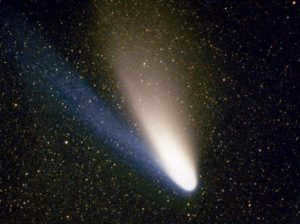
The comet was first observed on July 23, 1995 when it was at a considerable distance from the Sun (approximately 7.2 astronomical units). This indicated that it would be quite luminous and visible as it approached Earth. Despite the challenges in accurately predicting the brightness of comets, this particular comet exceeded astronomers’ expectations by reaching its closest point to the Sun (perihelion) on April 1, 1997. It is sometimes referred to as the “Great Comet of 1997”.
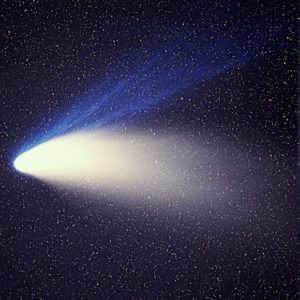
The Hale-Bopp comet caused a lot of confusion when it appeared, as it was a rare sight. There were widespread rumors that the comet was being followed by an alien spaceship. These rumors even led to a mass suicide among the followers of a new religious movement called “Gates of Heaven”.
When will the comet return?
The comet is expected to make its next perihelion in the year 4380.
Read more
An astronomical unit is a unit of distance measurement in astronomy that was historically based on the major semi-axis of the Earth’s orbit. It is considered to be the average distance from the Earth to the Sun, which is about 126.





